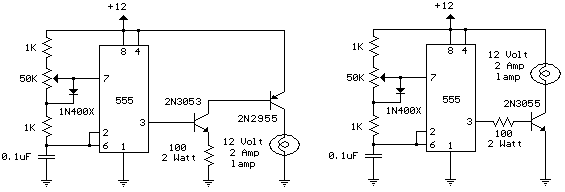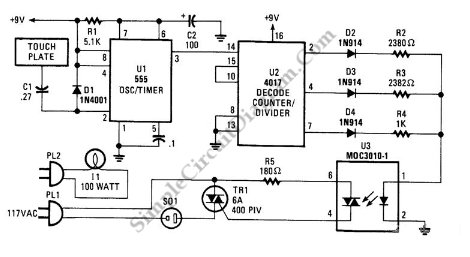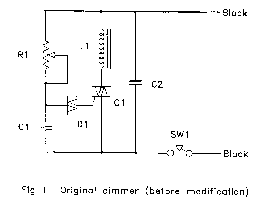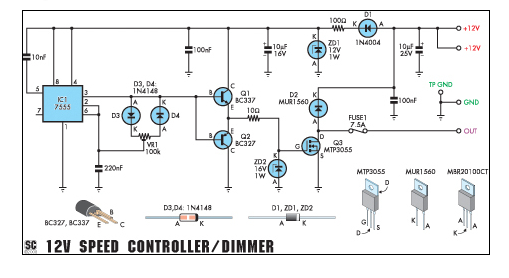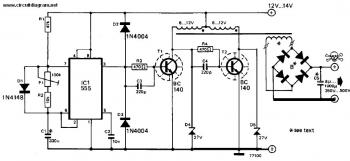
12V Dimmer
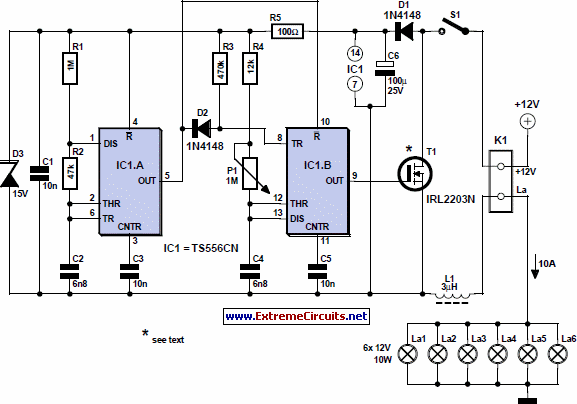
A dimmer is relatively uncommon in a caravan or on a boat. This document outlines how to create one, allowing for mood adjustment in these environments.
A dimmer switch is an essential component for controlling lighting levels in various settings, including caravans and boats, where space and energy efficiency are paramount. The design of a dimmer circuit typically involves a combination of resistors, capacitors, and a control mechanism, such as a potentiometer or a microcontroller, to modulate the voltage supplied to the light source.
For a basic dimmer circuit, a TRIAC (Triode for Alternating Current) can be employed to manage the power delivered to the light fixture. The TRIAC is triggered by a phase control technique, which adjusts the point in the AC cycle at which the TRIAC is activated. This is achieved through a simple RC (resistor-capacitor) network connected to the gate of the TRIAC. The values of the resistor and capacitor dictate the delay before the TRIAC turns on during each AC cycle, effectively controlling the brightness of the light.
To implement this circuit, the following components are required:
1. A TRIAC rated for the expected load current and voltage.
2. A diac, which helps in triggering the TRIAC at a specific voltage threshold.
3. A potentiometer to allow user adjustment of the dimming level.
4. Resistors and capacitors to form the timing circuit.
The circuit should be designed with safety in mind, particularly in a marine or mobile environment. Proper insulation and waterproofing measures must be taken to protect the components from moisture and vibrations. Additionally, a fuse should be included to safeguard against overcurrent conditions, and the circuit should be housed in a secure enclosure to prevent accidental contact.
Once assembled, this dimming circuit can significantly enhance the ambiance of a caravan or boat, allowing users to create the desired lighting conditions for various activities, whether it be relaxing in the evening or navigating during the night.A dimmer is quite unusual in a caravan or on a boat. Here we describe how you can make one. So if you would like to be able to adjust the mood when you re.. 🔗 External reference
A dimmer switch is an essential component for controlling lighting levels in various settings, including caravans and boats, where space and energy efficiency are paramount. The design of a dimmer circuit typically involves a combination of resistors, capacitors, and a control mechanism, such as a potentiometer or a microcontroller, to modulate the voltage supplied to the light source.
For a basic dimmer circuit, a TRIAC (Triode for Alternating Current) can be employed to manage the power delivered to the light fixture. The TRIAC is triggered by a phase control technique, which adjusts the point in the AC cycle at which the TRIAC is activated. This is achieved through a simple RC (resistor-capacitor) network connected to the gate of the TRIAC. The values of the resistor and capacitor dictate the delay before the TRIAC turns on during each AC cycle, effectively controlling the brightness of the light.
To implement this circuit, the following components are required:
1. A TRIAC rated for the expected load current and voltage.
2. A diac, which helps in triggering the TRIAC at a specific voltage threshold.
3. A potentiometer to allow user adjustment of the dimming level.
4. Resistors and capacitors to form the timing circuit.
The circuit should be designed with safety in mind, particularly in a marine or mobile environment. Proper insulation and waterproofing measures must be taken to protect the components from moisture and vibrations. Additionally, a fuse should be included to safeguard against overcurrent conditions, and the circuit should be housed in a secure enclosure to prevent accidental contact.
Once assembled, this dimming circuit can significantly enhance the ambiance of a caravan or boat, allowing users to create the desired lighting conditions for various activities, whether it be relaxing in the evening or navigating during the night.A dimmer is quite unusual in a caravan or on a boat. Here we describe how you can make one. So if you would like to be able to adjust the mood when you re.. 🔗 External reference

